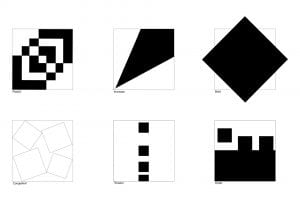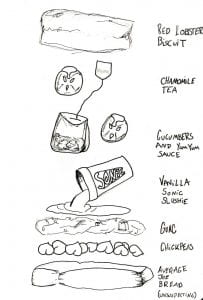Research
My initial ideas and their pros/cons:
- Candle
- pros: heat, smell, and scent (a lot of senses for abstracting), this could have a fun and attractive color scheme.
- cons: seems too easy to abstract and I would like a challenge to push myself, might be too vague, just doesn’t feel right.
-
- All senses (an experience like just taking in and paying attention to every sense in a calm environment) (another idea was to strip down one sense like smell to that unbiased state and abstract it through other senses like the literary device synesthesia)
- pros: could be a good challenge because I wanted to make it applicable to every experience that ever happens just by taking out all bias and emotion and just creating something that resonated with everything.
- cons: senses are inherently processed with emotion and for that reason, it is hard to find that unbiased viewpoint, too vague, every experience isn’t one specific experience
- Song (This one I was just confused on the project and though we could tie in auditory aspects and just was thinking about using a song to abstract a different experience instead)
- THINGS I HATE (this is where my final idea came from)
- pros: I have a lot of passionate hate for things like tapping and chewing and just repeated rhythmic annoyances in general, I feel physical hatred for them and it is a large sensory experience
- cons: could be too niche and specific to my own self
Click to see my mind maps of these ideas here: Mind Maps
- MY FINAL IDEA: Hypersensitivity experience to those who have ADHD (I have ADHD and I know the effects of being hypersensitive to sounds when it is unknown to others. I decided that this wasn’t too niche because it is a normal thing to be annoyed by loud eating and other sounds (in other extreme cases it can be called misophonia).
Click to see my mind map for my final idea here: Hypersensitivities and Elements&Principles
Furthering my Eating Research
Below is a jpg of images I gathered that sparked anger and disgust in me.
Iterations/Ideations/Draft
Below I had planned to include a calm-before-the-storm feeling, anger, disgust, and sadness, but I decide afterwards that I just wanted to have those two main components of anger and disgust. Including all four was my way to tell a timeline, but I decided to just stick with a pinpoint moment.
Below is the progression of my concepts in order from
1. The timeline idea with CBTS, anger, disgust, sadness
2. Continuation of the timeline idea
3. Timeline that centers around anger and then spreads to disgust, sadness, and then the calmness (which differs from the calmness beginning the timeline)
4.The first version of my final
5. A more developed version
6. A different take on the color scheme with just anger and disgust
7. The last iteration before my final
I printed #7 as my draft and brought balls of air dry clay to put onto the green blobs to paint green for my 3D element.
Final! 🙂
During my draft critique I realized that I didn’t want to add 3D elements that were popping out at you because the whole experience is based around silently suffering and hiding your anger. To accomplish this, I made the green blobs more bold so they were interesting without a 3D elements and I darkened the background for larger contrast. My 3D element was a subtle piece of fabric to add texture and roughness to the spiky objects below. The low contrast on the bottom was intentional to create confusion and frustration. Again, I wanted a subtle 3D element to show the frustration of hiding the annoyance.



































